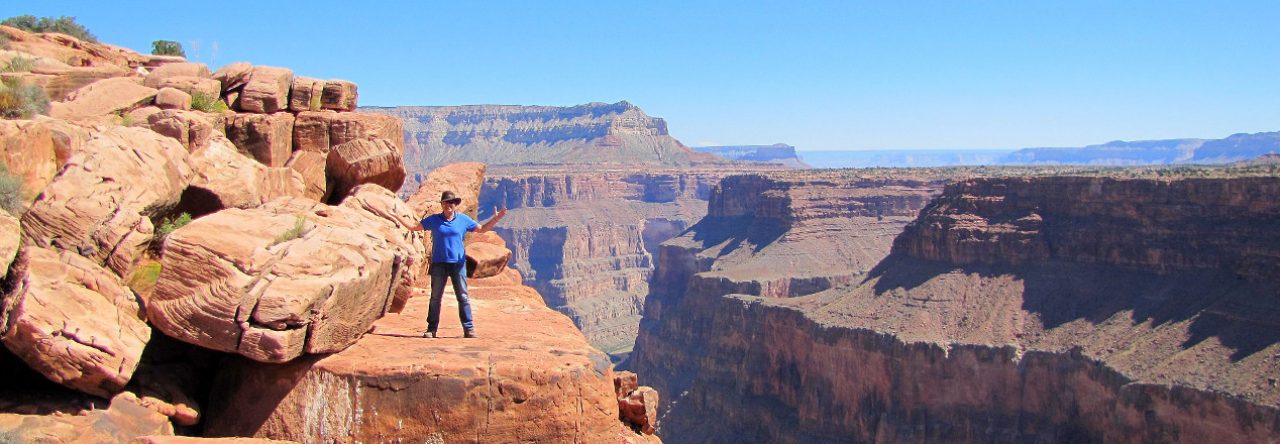You fly a Cirrus SRXX series airplane, how many different types of glidepaths can you see on the PFD? A bonus question for all Cirrus SR line experts, can you list them per avionics type? By glidepath, I mean here any type of vertical guidance displayed on the PFD.
The answer to the question depends on what type of avionics, primarily Flight Management System (FMS also called Navigator) you have. Let’s summarize it first and then provide details:
- One: original non-WAAS GNS430
- Three: WAAS FMS (GNS430W, GTN650/750, GTN650/750Xi, IFD440/540/550) with Avidyne Entegra PFD
- Five: Cirrus Perspective.
- Seven: Perspective+ or G500 TXi with GTN650Xi.
Now that you know the answers, can you list them all?
GNS30
If you fly a Cirrus with the original non-WAAS GNS430 and an Avidyne PFD Entegra or the classic non-glass 6-pack instrumentation, you will only get one, a glideslope on an ILS approach.
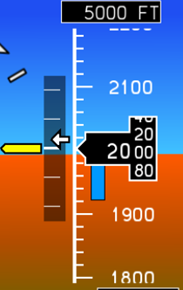
Quiz #1: Is the ILS the only type of conventional (radio-based) approach where you get a glideslope?
Since you have a non-WAAS Navigator, the RNAV approaches are limited to LNAV without a glidepath. Your Navigator can’t use baro-aiding to generate glideslope based on the altimeter, so you are stuck at one.
The picture on the left shows a glideslope on an Avidyne PFD. With Entegra EXP5000 PFD, glideslopes and glidepaths are depicted the same, you would need to look at your navigator or at the top left PFD datablock to know which one it is.
Quiz #2: What is the difference between a glideslope and glidepath?
WAAS
If you upgraded the GNS430 to WAAS when Garmin offered that great deal or upgraded later to touchscreen navigators from Garmin (GTN650/750, GTN650Xi/750Xi) or from Avidyne (IFD440/540/550) you can now enjoy LPV and LNAV/VNAV approaches, both requiring WAAS and both providing approved glidepaths. So how many are in the WAAS-equipped airplanes? Did you say two?
Not so quickly, while glidepaths on LPV and LNAV/VNAV are approved, the navigator will also generate advisory glidepath on LP and LNAV approaches, annunciating them as LP+V and LNAV+V. We just got our count to three.
What is an advisory glidepath? When in doubt, it is always best to ask the FAA. Advisory circular AC 90-107 has these words of wisdom:
Advisory Vertical Guidance. Vertical path deviation guidance indication that is generated by any means but is only an aid provided by some manufacturers to help pilots meet altitude restrictions. Advisory vertical guidance is an optional capability implemented at the manufacturer’s discretion, not a requirement for positioning and navigation equipment.
NOTE: It is the pilot’s responsibility to use the barometric altimeter to ensure compliance with altitude restrictions, particularly during approach operations. Advisory vertical guidance is not approved vertical guidance like that found on approaches with lateral navigation (LNAV)/vertical navigation (VNAV), LPV or instrument landing system (ILS) lines of minima.
Approved Vertical Guidance. Actual vertical path deviation guidance indications generated by certified means for charted approach procedures that contain a U.S. Standard for Terminal Instrument Procedures (TERPS)-protected glidepath (e.g., approaches with LNAV/VNAV, LPV or ILS lines of minima).
Quiz #3: Is advisory glidepath +V available on all LNAV and LP approaches?
An advisory glidepath is never referred to on approach charts, you must continue to use LP or LNAV MDA, and these approaches remain non-precision.
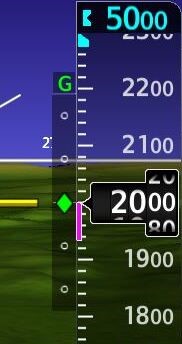
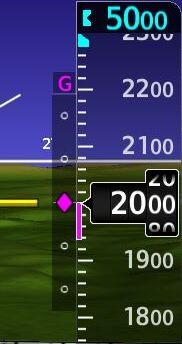
FAA is clear that advisory means what it says. The FMS simply draws a straight line from the runway to the FAF altitude and extends it. There is no obstacle protection and that is something you should be particularly careful of when descending below MDA. Aren’t you supposed to see the runway environment before descending below MDA? Yes, you are, but remember that even if you see PAPI lights, which is enough to keep going, it doesn’t mean you will see that unlighted obstacle, for example, a tree, if you fly at night or in 1-mile visibility.
In contrast, an approved glidepath is designed to avoid such obstacles and is flight-tested every 270 days.
As stated before, Avidyne PFD depicts all glidepaths and glideslope in the same, shown on Figure 1, but Perspective uses different color coding for RNAV (GPS) and conventional (radio-based) approaches. The former is always depicted in magenta, while the later in green.
LNAV/VNAV
This type of approach is confusing to many pilots, particularly since we rarely encounter them when flying. To understand them we must go back in time to when the original un-augmented GPS was introduced.
GPS allowed designers to create instrument approaches to many airports that couldn’t afford expensive ground equipment required for ILS or LOC approaches or were too far away from VOR or NDB transmitters. That was a great thing, except that it couldn’t provide vertical guidance. Per the standard, 95% accuracy was only 400’ vertically (120’ horizontally) and that was not enough. Although in practice, accuracy was typically much better (13/10), the standard numbers were insufficient. How to generate a glidepath then?
Smart people figured out that an altimeter could be used to generate a glidepath and avionics manufacturers obliged. This is called baro-aiding and it is the capability of avionics to generate and display a glidepath using an altimeter as the source. As we all know, an altimeter setting is required to correct for non-standard pressure and thus baro-aided LNAV/VNAV approach is the only one where the glidepath is susceptible to errors due to the pilot setting the altimeter incorrectly.
Quiz #4: Why do you rarely get to fly LNAV/VNAV approaches?
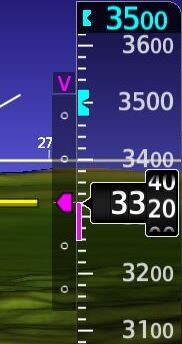
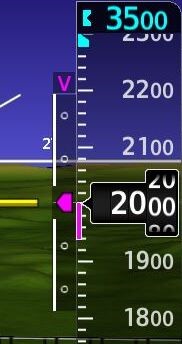
Later, when WAAS was introduced, navigators started to use WAAS as the source for the glidepath, since it is not susceptible to the same altimeter setting errors and it is as or more accurate than the baro-aided version.
All WAAS navigators in Cirrus aircraft can fly WAAS-based LNAV/VNAV procedures, but only Perspective and Perspective+ can fly baro-aided LNAV/VNAV. Garmin GNS430W and Avidyne IFDs will downgrade to LNAV in the absence of WAAS. Garmin GTNs will also downgrade to LNAV but will display the advisory glidepath as LNAV+V, where that glidepath is derived from baro-aiding if they are wired to receive baro information from the PFD and have a minimum software version.
Perspective
As discussed in the LNAV/VNAV section, Perspective can generate a glidepath on LNAV/VNAV approaches using baro-aiding. Note that the shape of the marker on the Vertical Deviation Indicator (VDI) is different, it is a magenta pentagon and not a diamond. This brought our count to four.
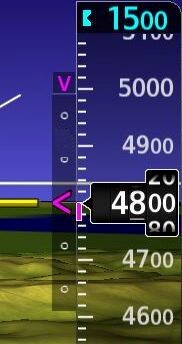
Perspective is also able to display a vpath on the PFD, this is a vertical navigation glidepath, and that brings the count to five. While Avidyne IFDs and Garmin GTNs also have vertical navigation capabilities, that glidepath cannot be displayed on the Entegra PFD. The situation will likely change with the upcoming Vantage PFDs.
Vertical navigation is often misunderstood by pilots, and it would take a whole article to discuss it, I will provide here just a brief overview. Vertical navigation assigns altitudes to waypoints in the flight plan. These altitudes may be manually entered, retrieved from the database for example for approaches, or calculated by the FMS. Altitudes for vertical navigation are based on the altimeter, not GPS. The FMS draws a straight line between altitudes of adjacent waypoints and as long as the gradient exceeds a parameter called Flight Path Angle (FPA, by default 1.7°), it displays a vpath based on that line. If the gradient were less than FPA, the current altitude is maintained. To use VNAV with autopilot, a pilot should set up the altitude of the lowest waypoint in the flight plan (which would be FAF on approaches) in the altitude selector and arm VNAV by pressing the VNV button when cleared for the approach. Remember that VNAV works only for descents, there is no point in entering altitudes for climbs.
On Perspective, VPATH disappears at the fix before the final and the airplane will level off at that altitude.
Perspective+
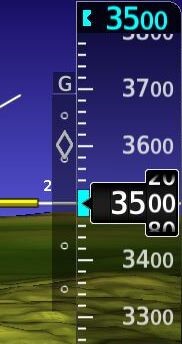
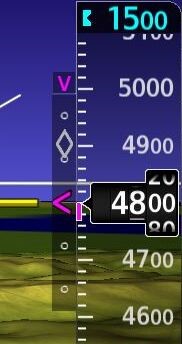
Perspective+ added a great feature called glideslope (on ILS) or glidepath (on RNAV) preview, but I like to call it shadow glideslope or shadow glidepath, which brings the total to six or seven, depending on if you count them as one or two. Recall the approved glidepath on RNAV approaches shows on the VDI when the aircraft crosses the fix before the final, in other words when FAF becomes the active waypoint. Before that, you don’t know if you are high or low on the approach, short of doing mental calculations. Shadow glidepath remedies that by displaying on the VDI much earlier, anytime you are close to the final approach course or established on the approach, which gives you great situational awareness for descents.
The same capability is available on G500TXi displays with GTN750Xi FMS.
What Garmin gave us with shadow glidepath, they took away with a quirk in vertical navigation. In Perspective airplanes, the airplane descending on vpath levels off at the fix before the final and waits for the glidepath. That requires extra power changes, adding power when leveling off and reducing it again when capturing the glidepath. Garmin wanted to simplify that process and extended VNAV all the way to the final approach fix. With Perspective+, the airplane continues to descend on the vpath while flying to FAF, but at a gradient slower than the glidepath, so it gets closer and closer to the glidepath, which remains as a shadow glidepath. When it is close enough, the shadow (hollow grey) glidepath switches to the approved (filled magenta) glidepath and the FMS seamlessly switches to it without leveling off. This looks great on paper, but the problem is that the switch from vpath to glidepath is not predictable, you don’t know when it will happen exactly and until it happens, glidepath remains a shadow. Since pilots know that autopilot doesn’t couple to shadow glidepath, our eyes remain glued to it, waiting for the switch, which may generate unnecessary fixation.
An even bigger problem occurs if you plan to capture the glidepath while flying to an intermediate fix, i.e., when the Final Approach Fix is not the active waypoint. You may be used to the fact that the airplane captures the shadow glidepath (or, to be more precise, the shadow glidepath turns approved, and then it is captured), but that will not happen, the airplane will fly through the shadow glidepath in this scenario and will not capture.
Lastly, earlier versions of Perspective+ were switching to the approved glidepath too early, when the airplane was still a dot below it, resulting in a momentarily pitch up and climb to intercept, certainly a disconcerting behavior when close to the final approach fix. This bug was fixed in the latest version of the software.
Quiz Answers
1. Is the ILS the only type of conventional (radio-based) approach where you will get glideslope?
While quite rare, there are also LDA approaches with glideslope. Recall that the difference between LOC and LDA is that LOC must be aligned within 3° to the runway, if it is more, it is called LDA. LDA/GS is an ILS that is not aligned (more than 3° difference) with the runway. It is a precision approach with decision altitude. Examples include LDA/GS 22 AMA and LDA/GS 25 EGE, but there are more.
2. What is the difference between a glideslope and glidepath?
A glideslope is a radio signal present on ILS approaches, generated by a ground-based transmitter and received by the airplane navigational radio. A glidepath is computed by the airplane navigator based on the GPS altitude information. Both are displayed on the PFD in the same (Avidyne Entegra) or different (Cirrus Perspective) ways.
3. Is advisory glidepath +V available on all LNAV and LP approaches?
WAAS must be available, and the approach must have straight in minima for +V to be generated. If there are only circling minima, you will not get it. Look at RNAV A and B at MEV for examples.
4. Why do you rarely get to fly LNAV/VNAV approaches?
Pilots cannot choose which approach to fly, and FMS will always choose LPV minima over LNAV/VNAV if they exist. There are only two cases when you will see LNAV/VNAV approach selected:
- When LPV is unavailable. An example of an approach where only LNAV/VNAV is available is LNAV/VNAV 35R SMF.
- When WAAS is unavailable and the FMS is capable of baro-aiding, which is the case of Perspective. Note that the most common cause for WAAS unavailability is that an instructor switched it off for training purposes.
5. When does the glidepath show on RNAV approaches?
Glidepath shows when the final approach fix becomes the active waypoint, which typically happens when you cross the fix before FAF
Summary
Let’s summarize our answers:
- Original non-WAAS GNS430 – one.
• Glideslope on ILS or LDA/GS approaches - WAAS FMS (GNS430W, GTN650/750, GTN650/750Xi, IFD440/540/550) – three.
• Glidepath on LPV and LNAV/VNAV approaches
• Advisory glidepath on LP+V and LNAV+V approaches - Perspective – five.
• Baro-aided glidepath on LNAV/VNAV approaches
• VNAV - Perspective+ – seven
• Shadow glidepath
• Shadow glideslope
Did you get it all correct?
